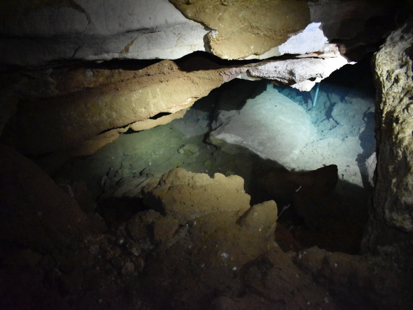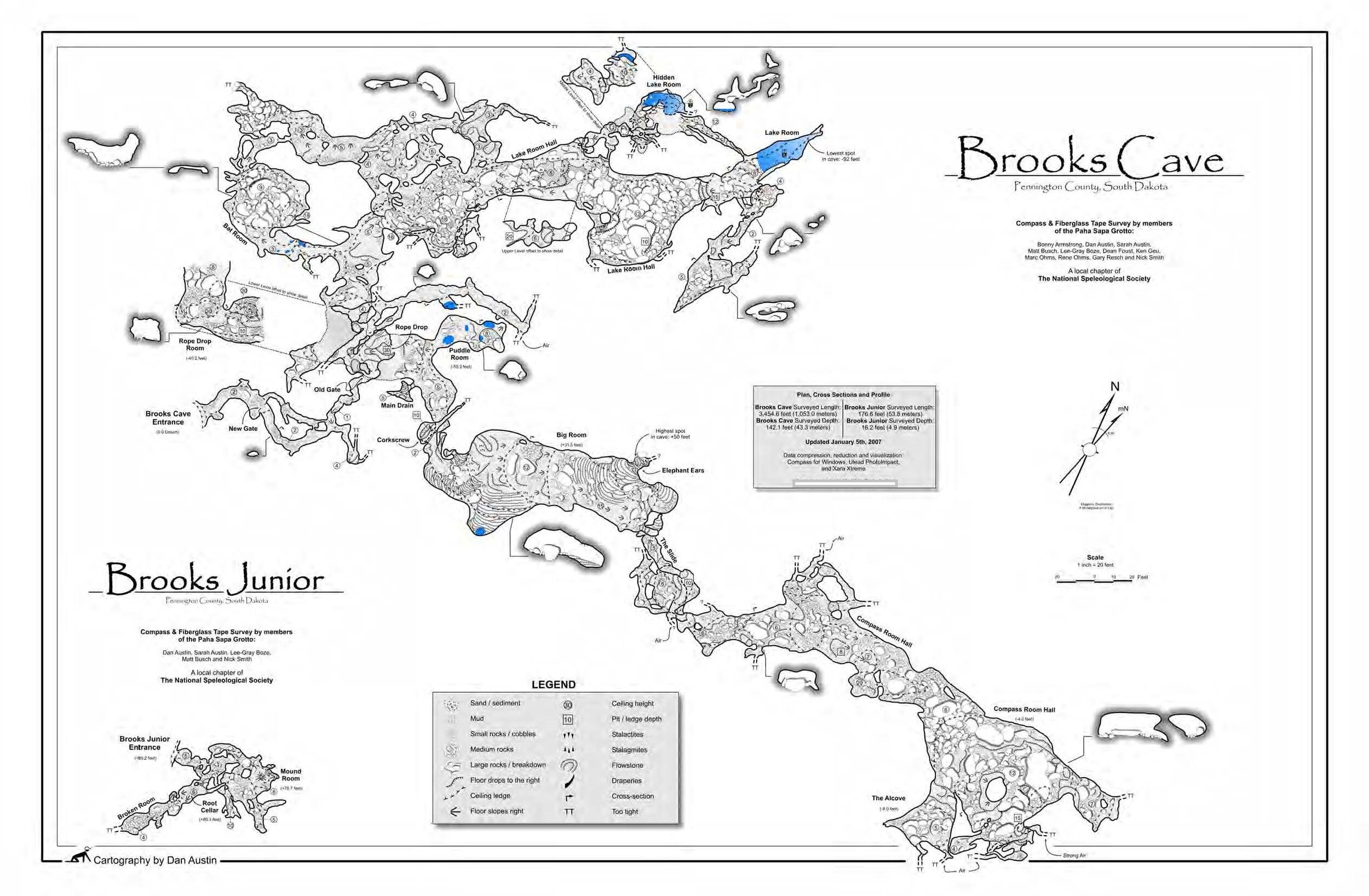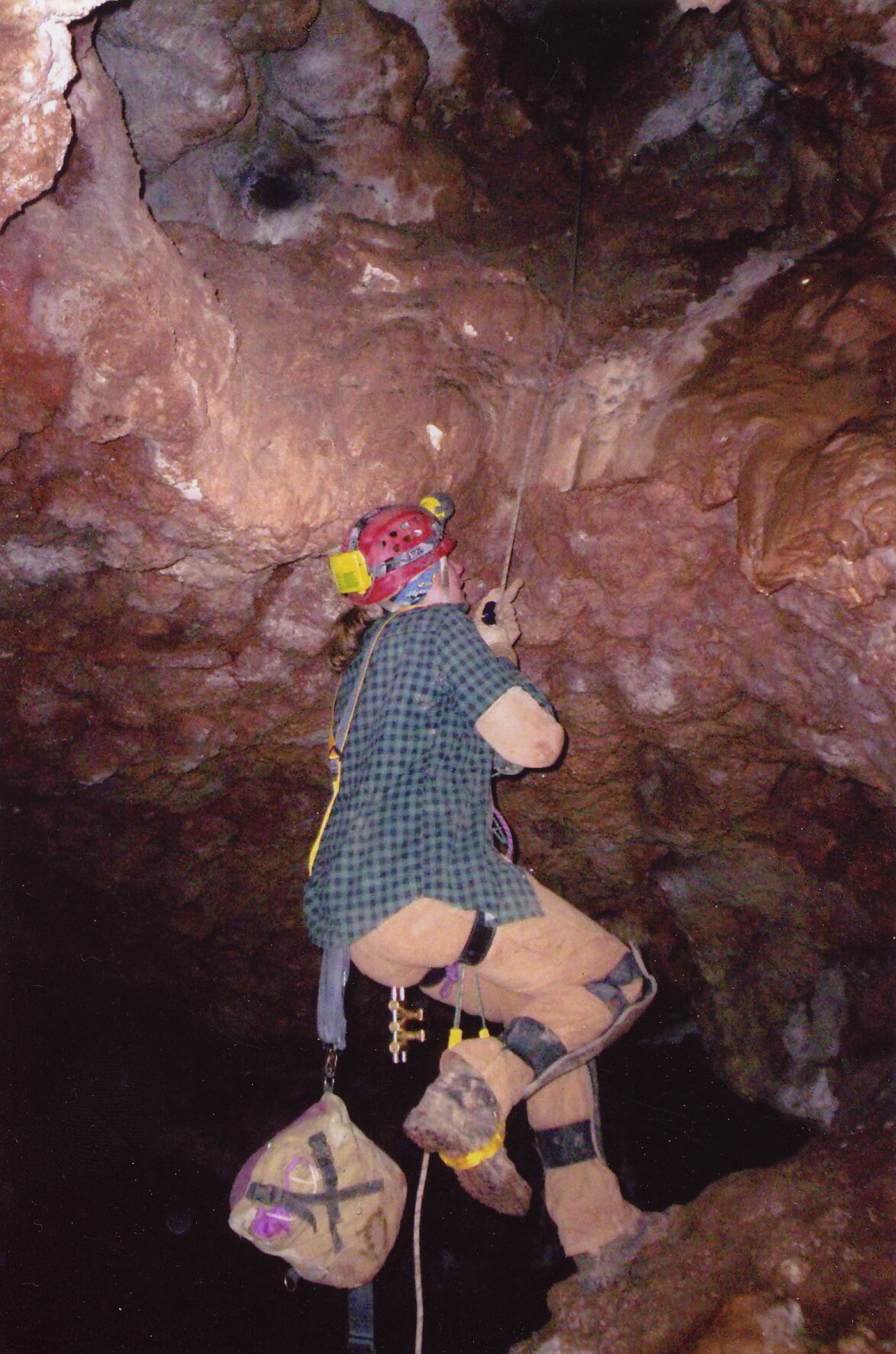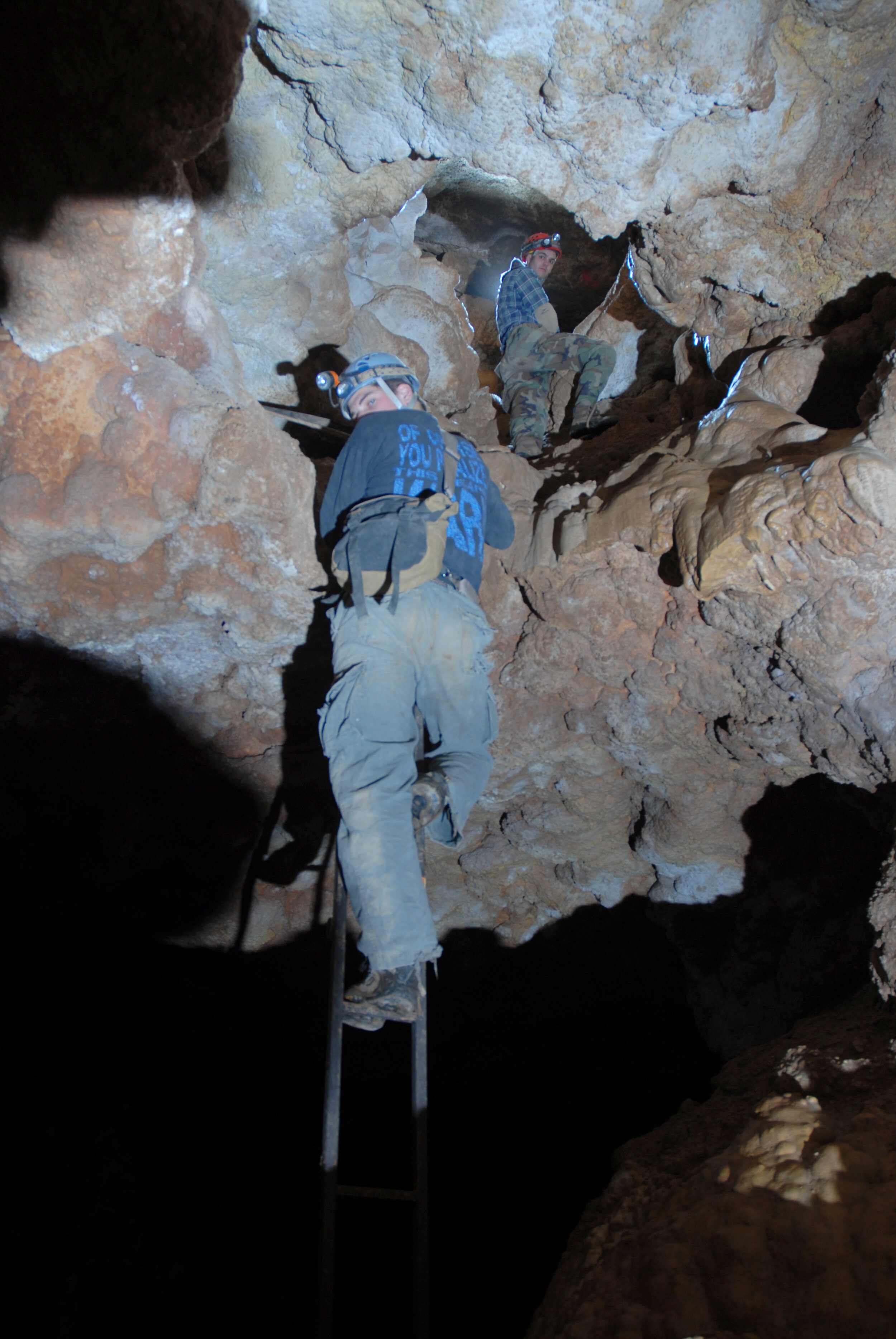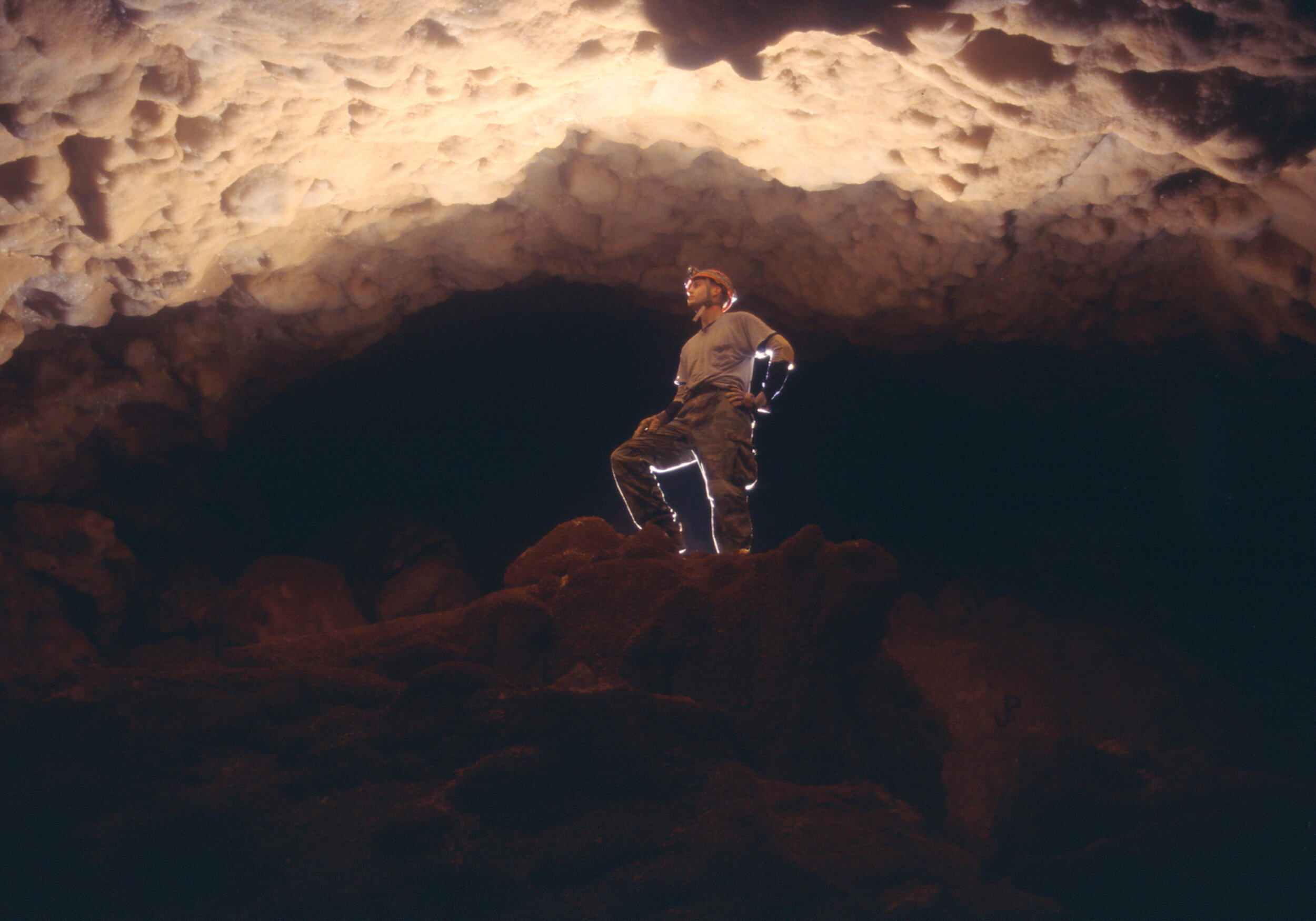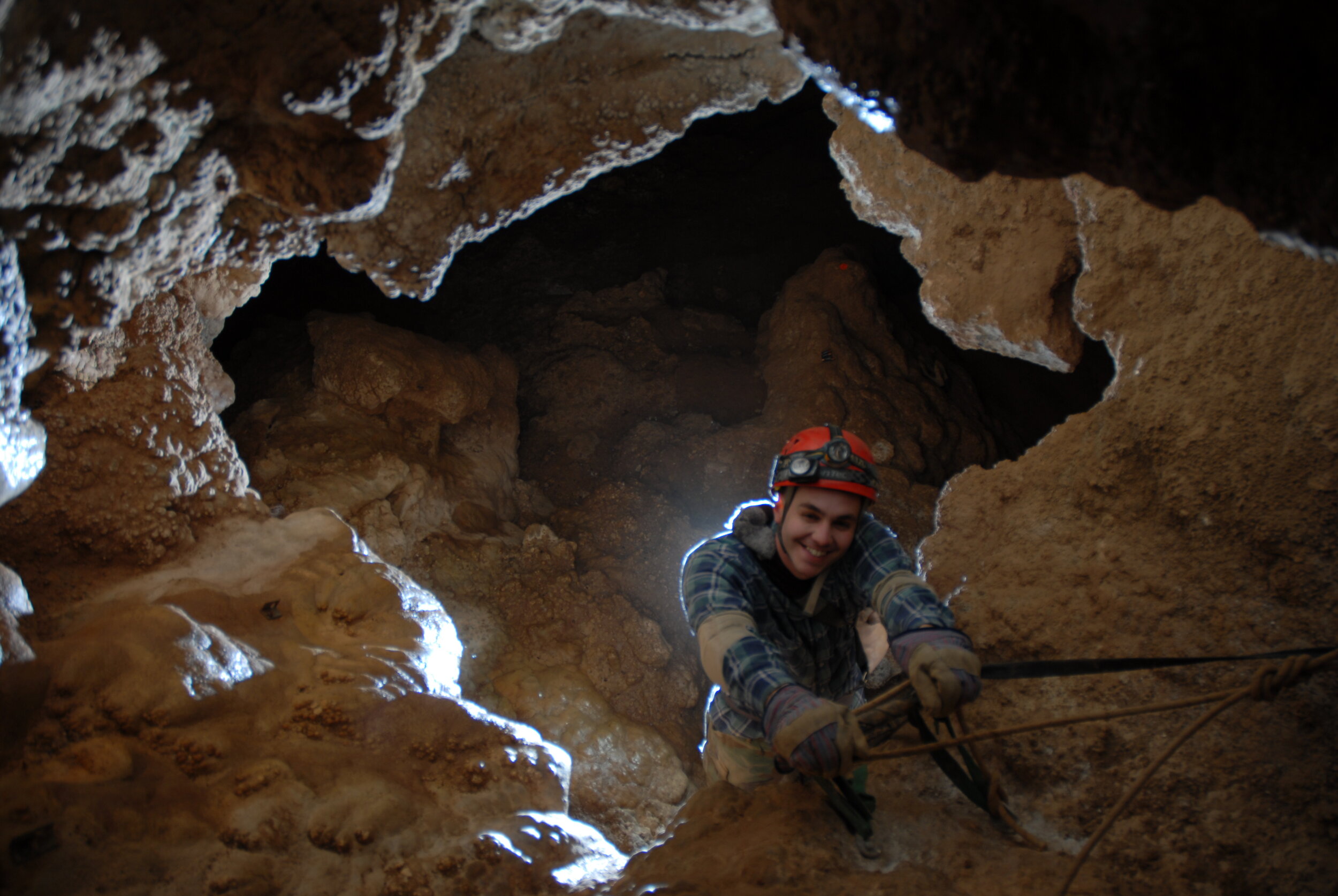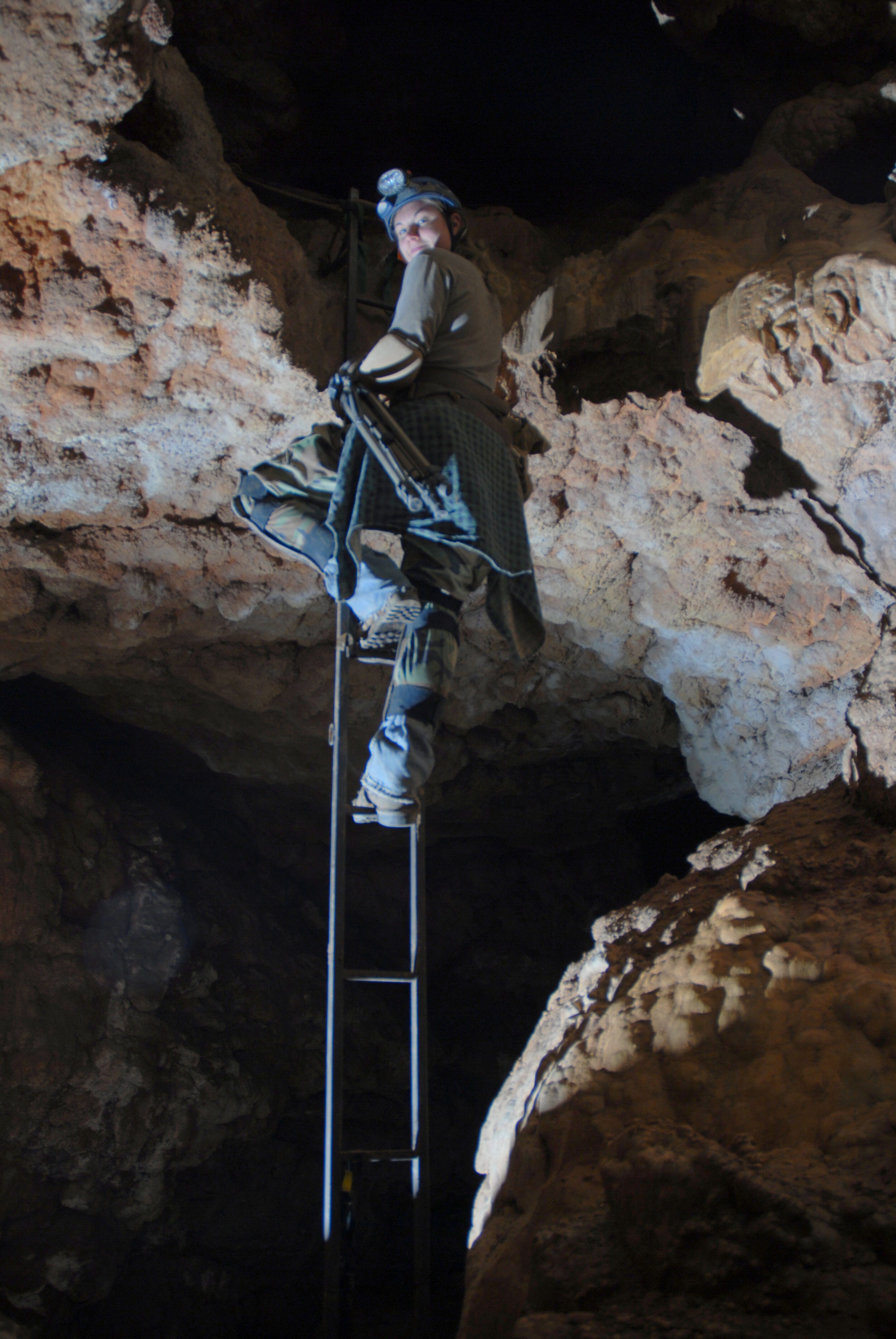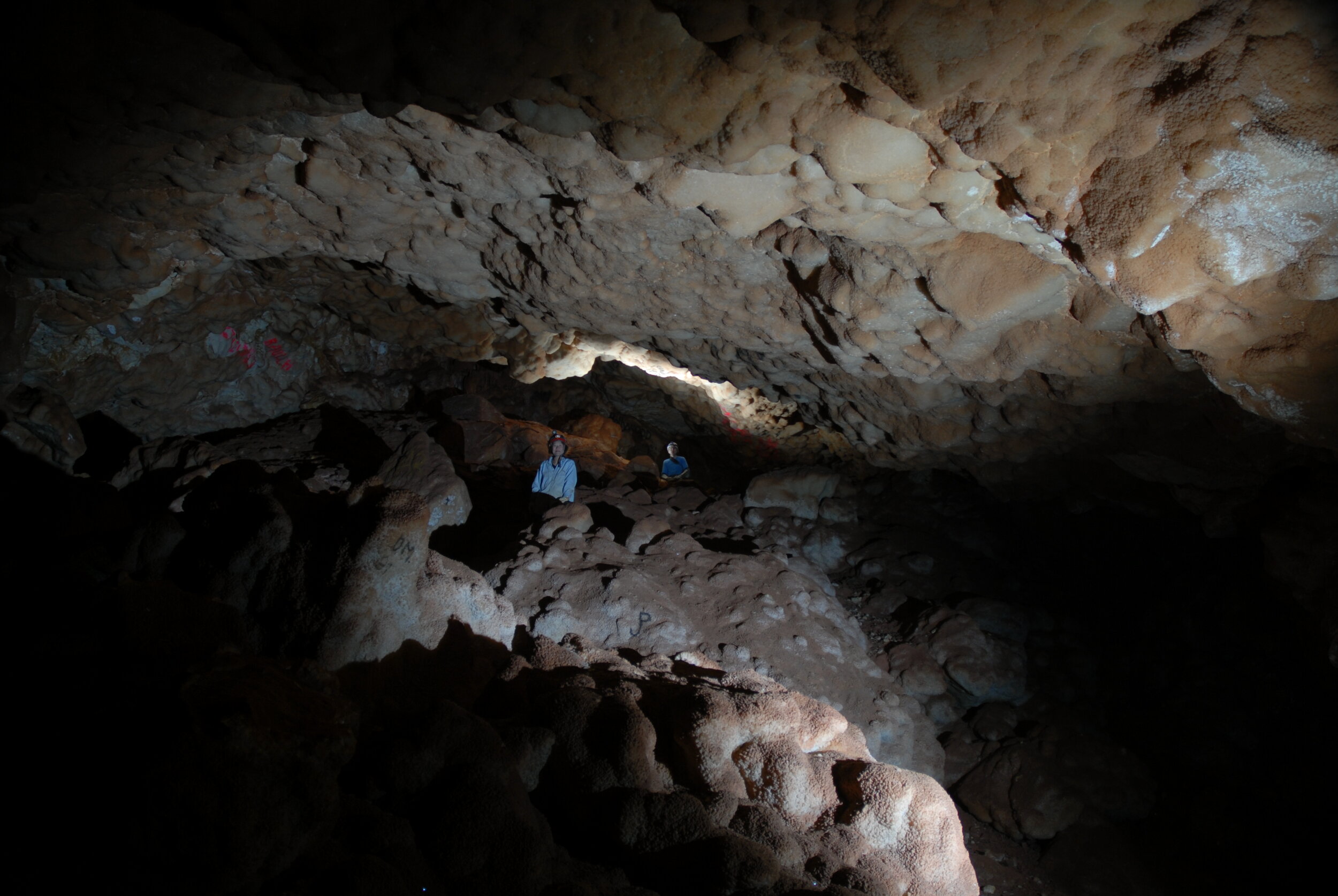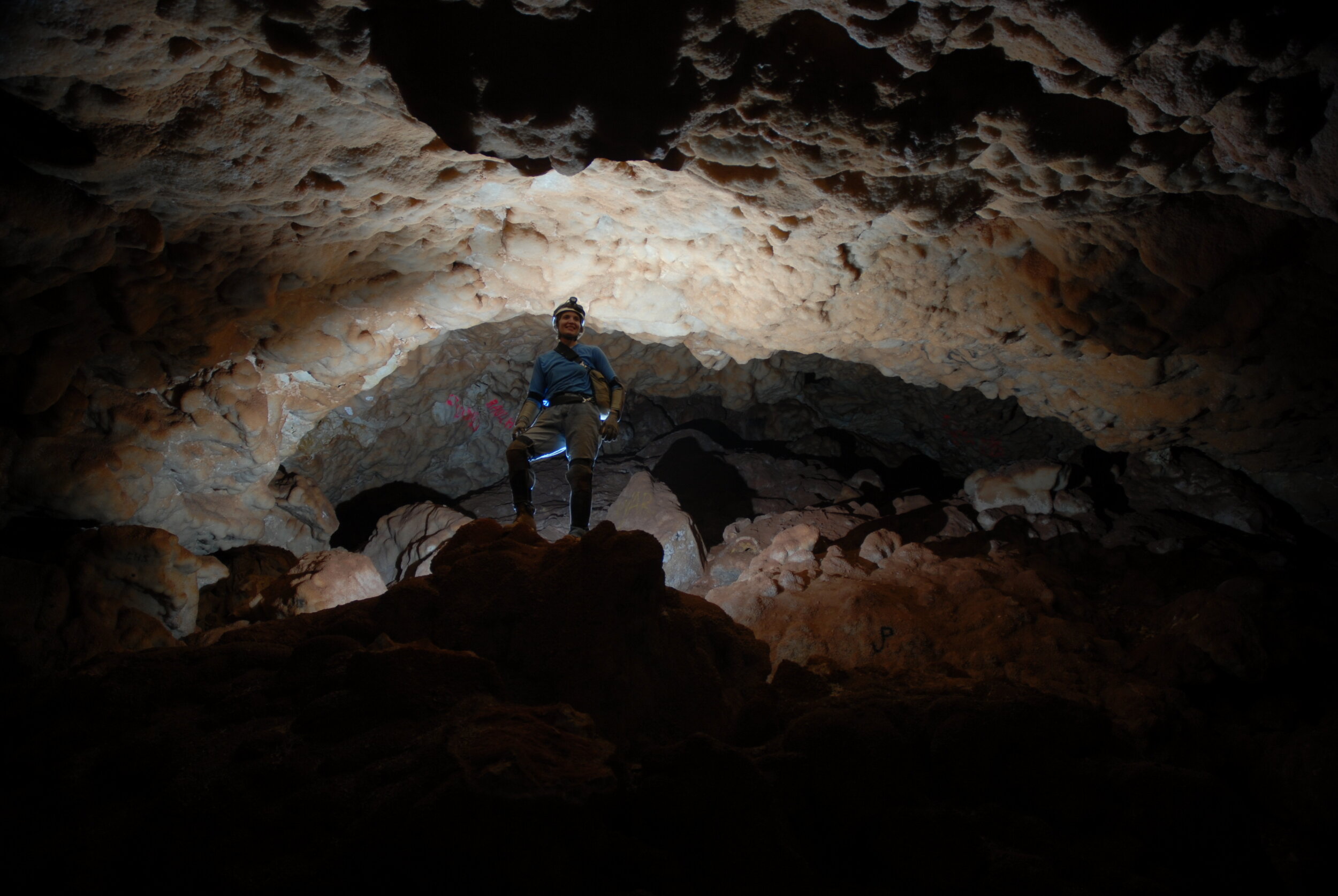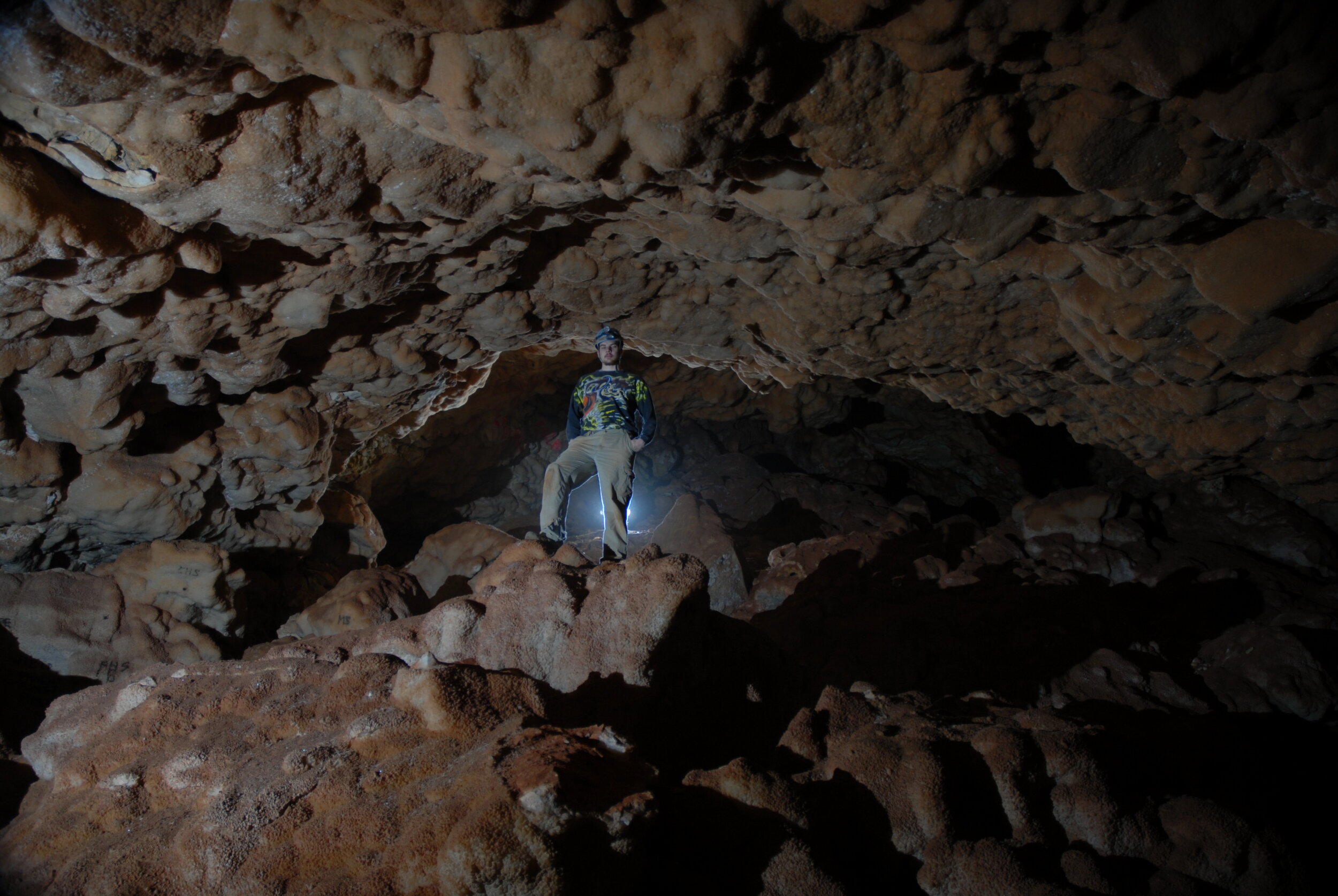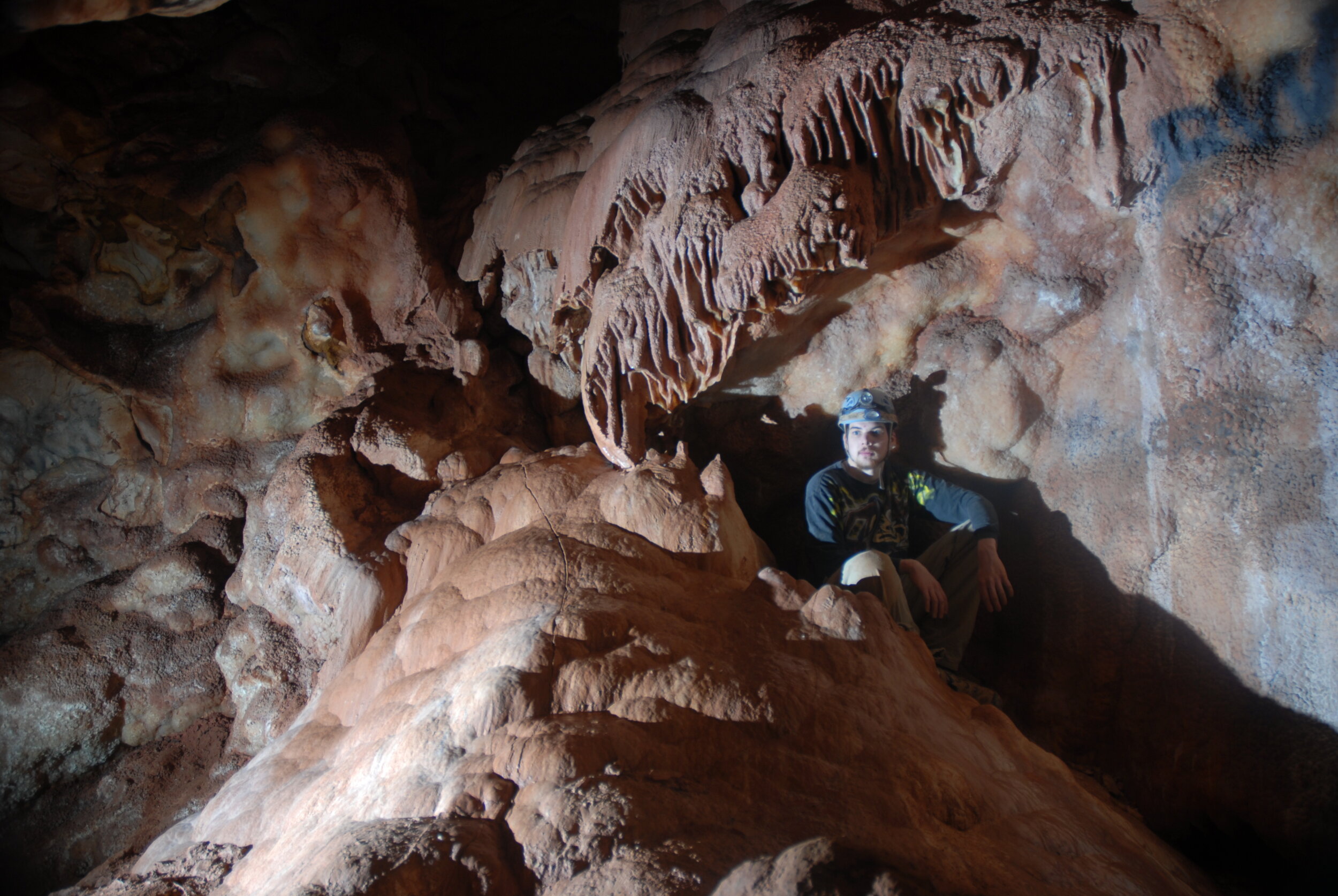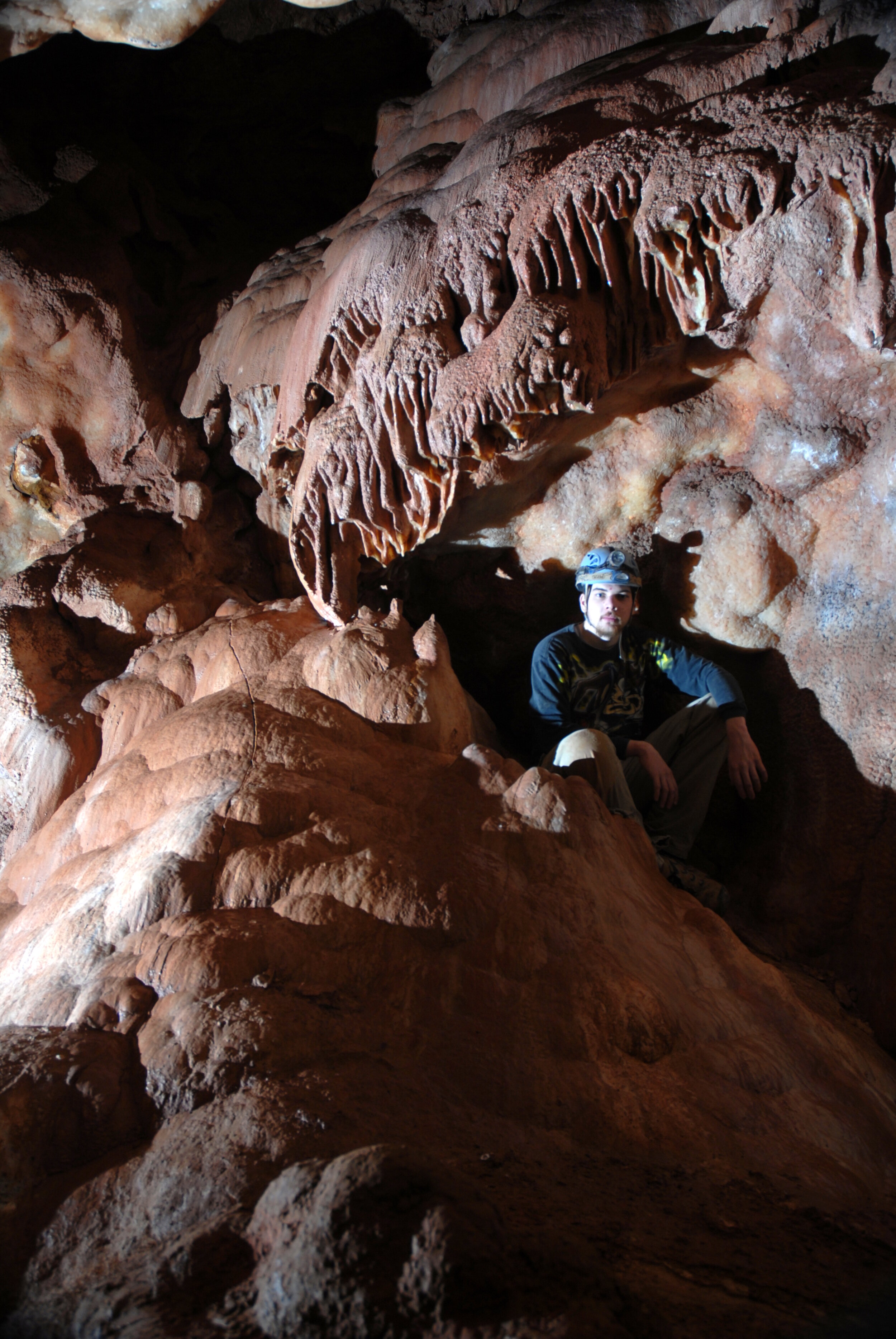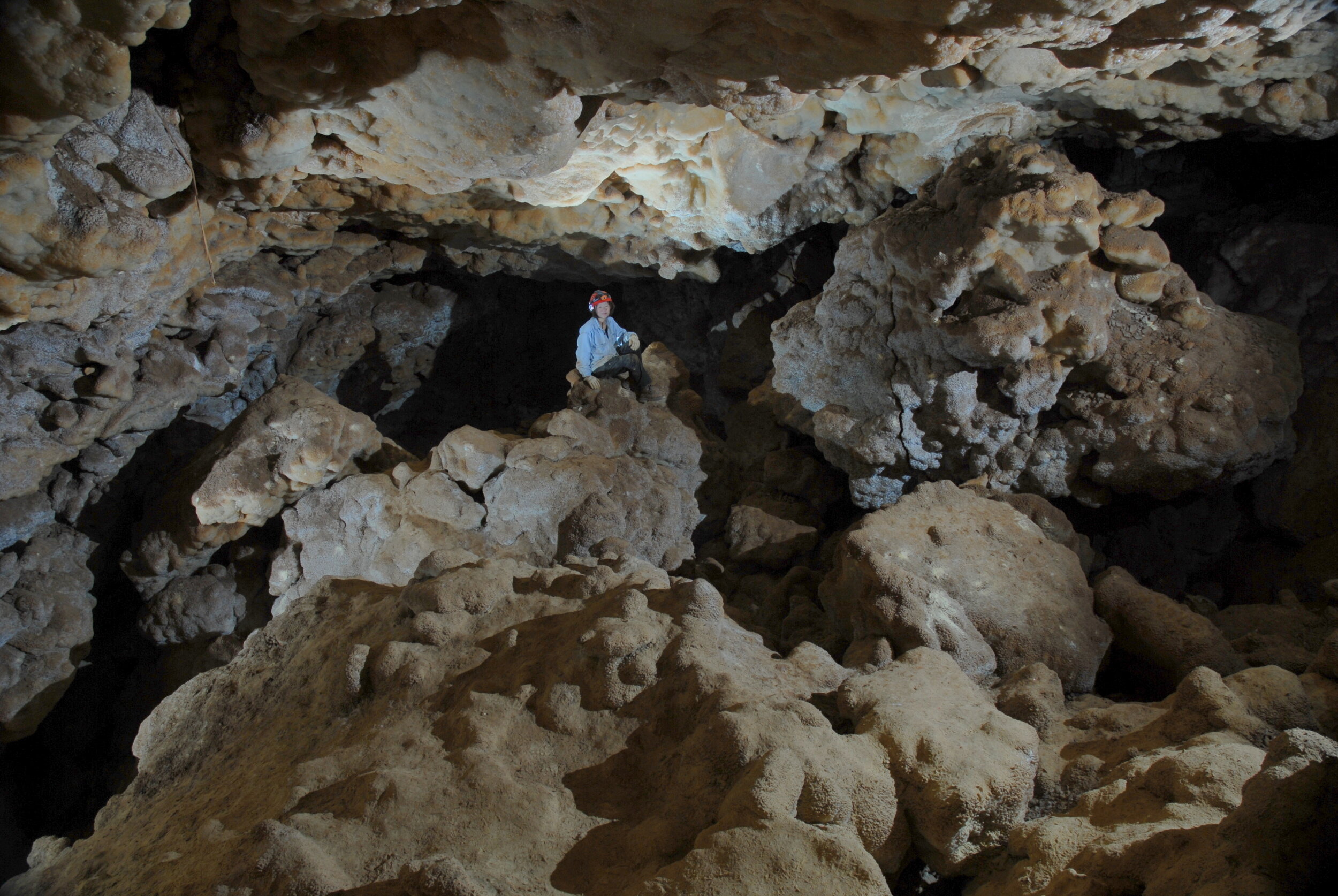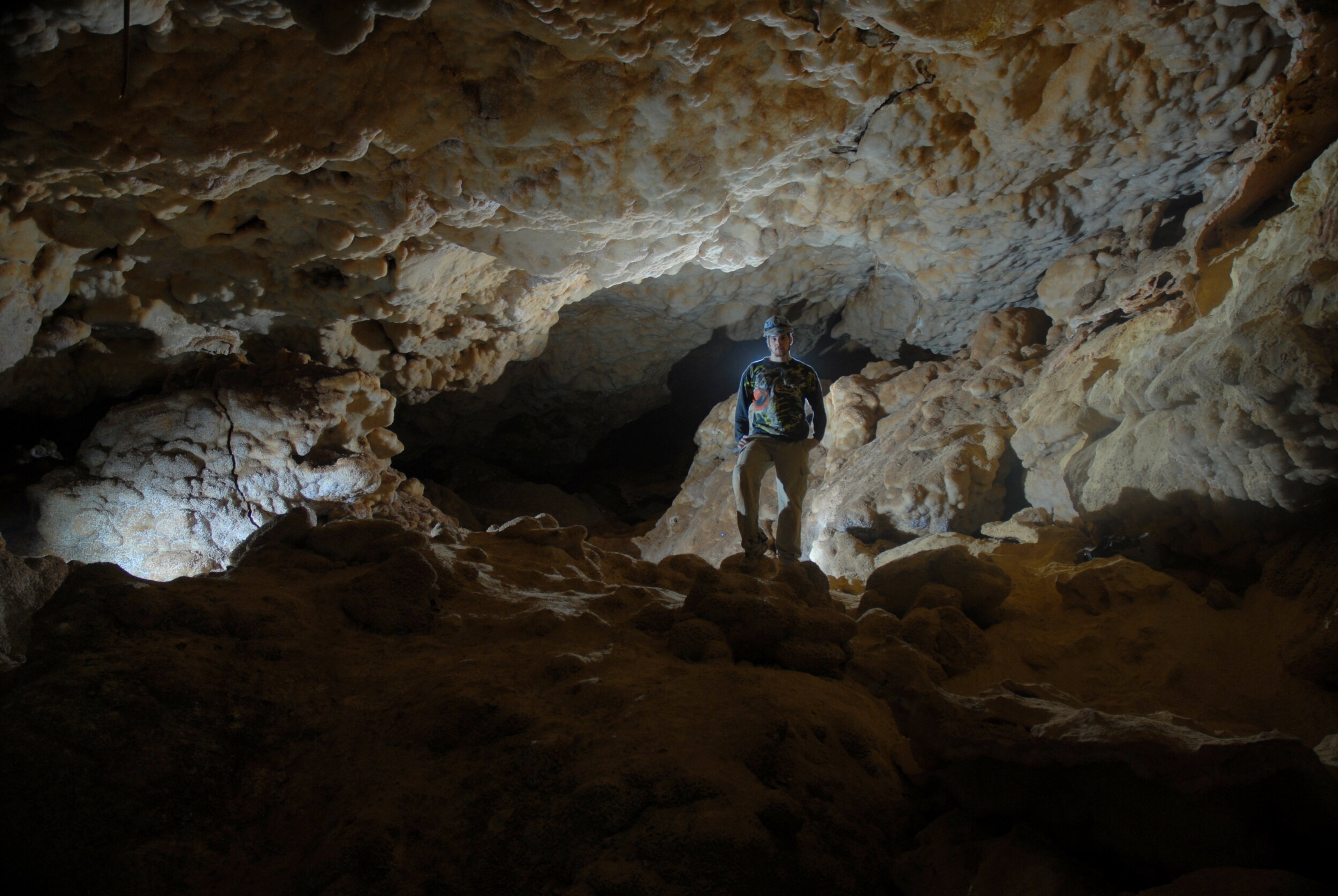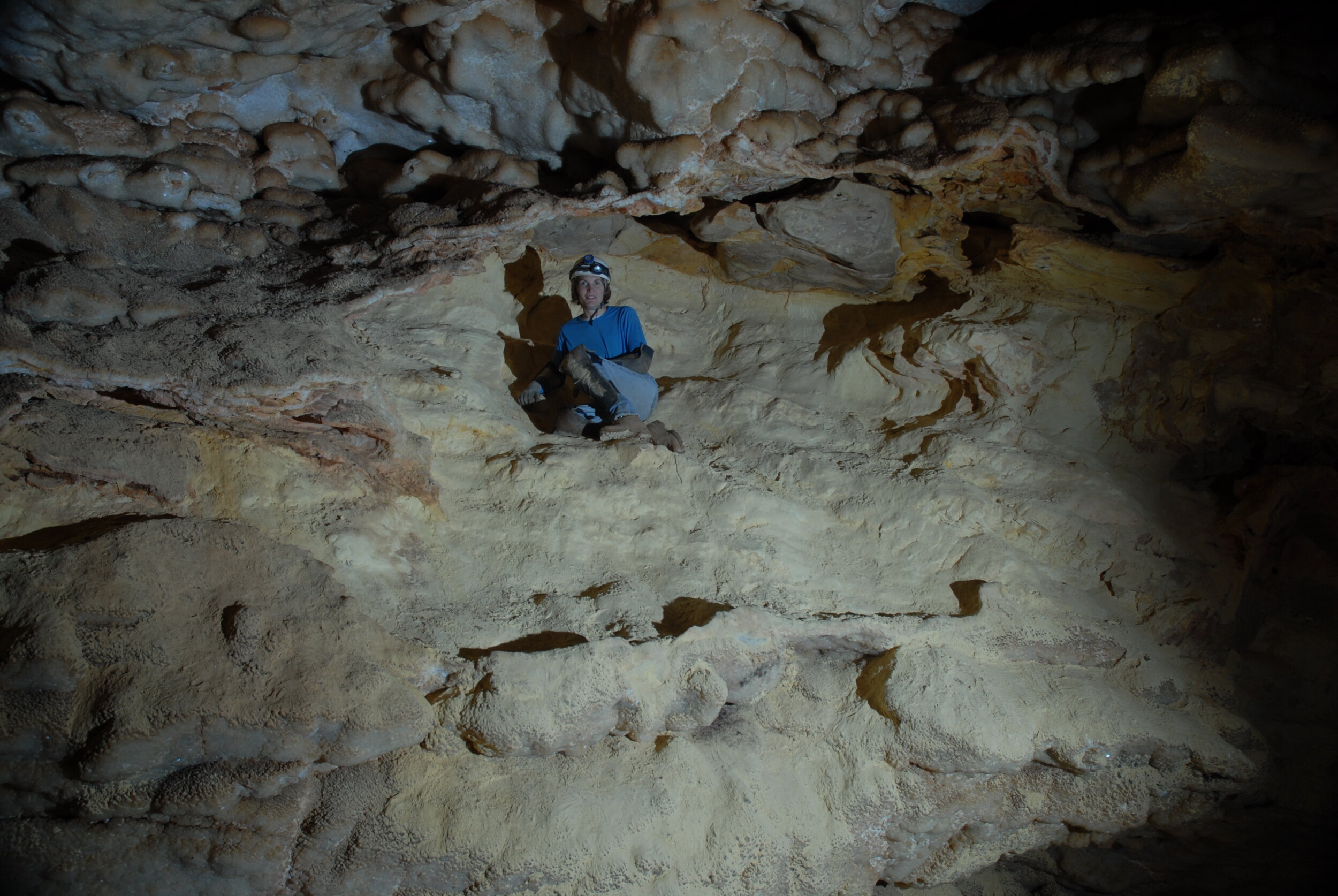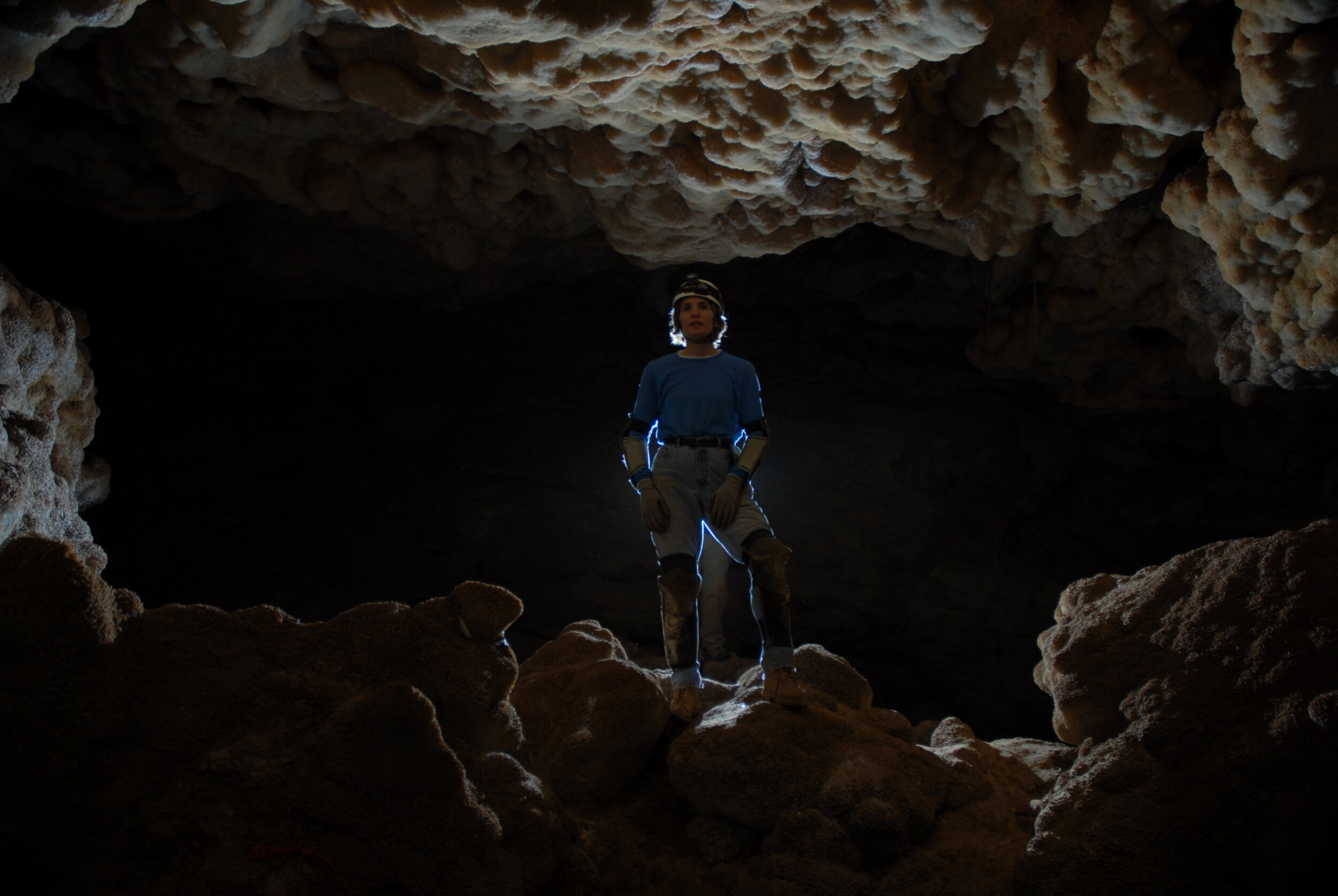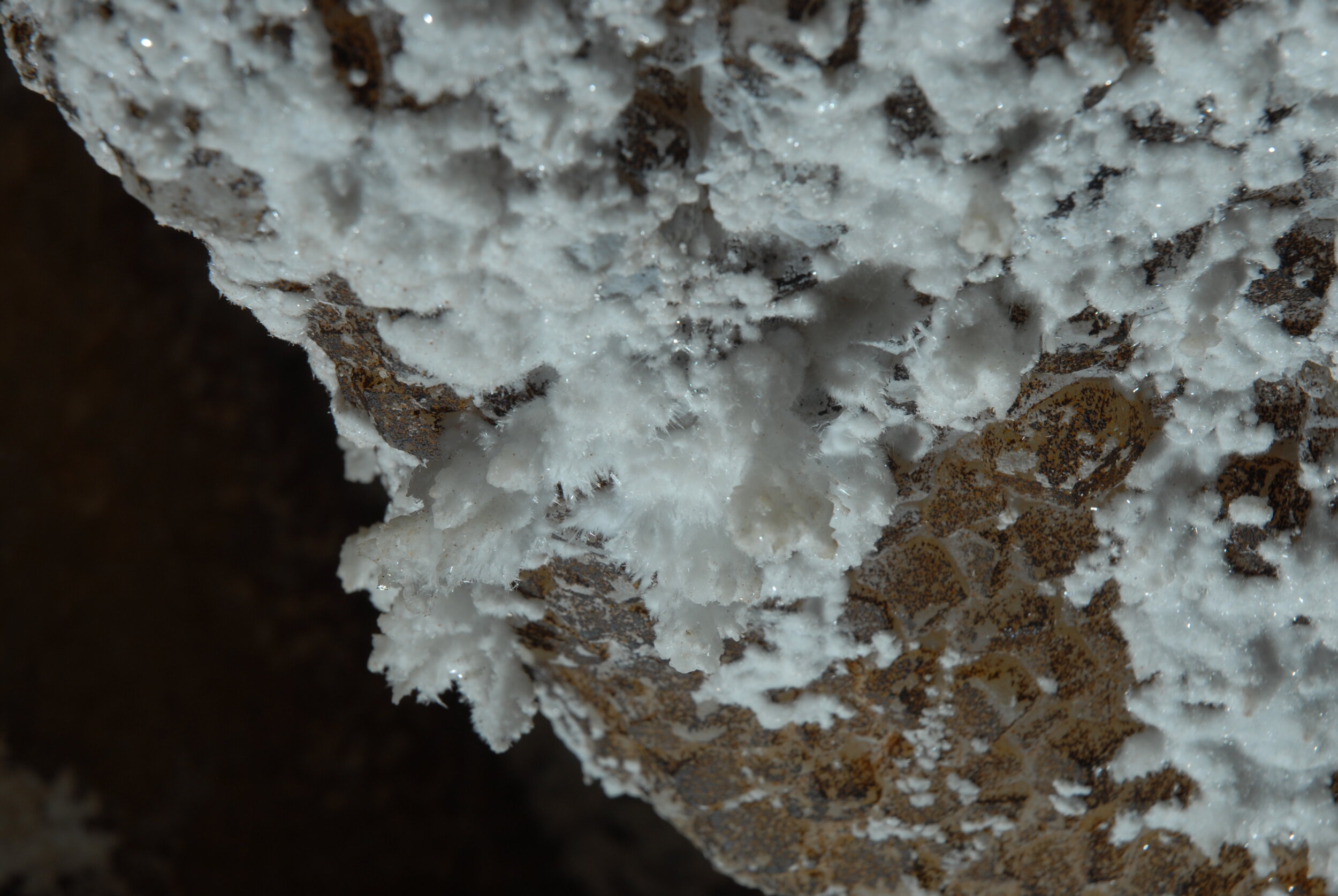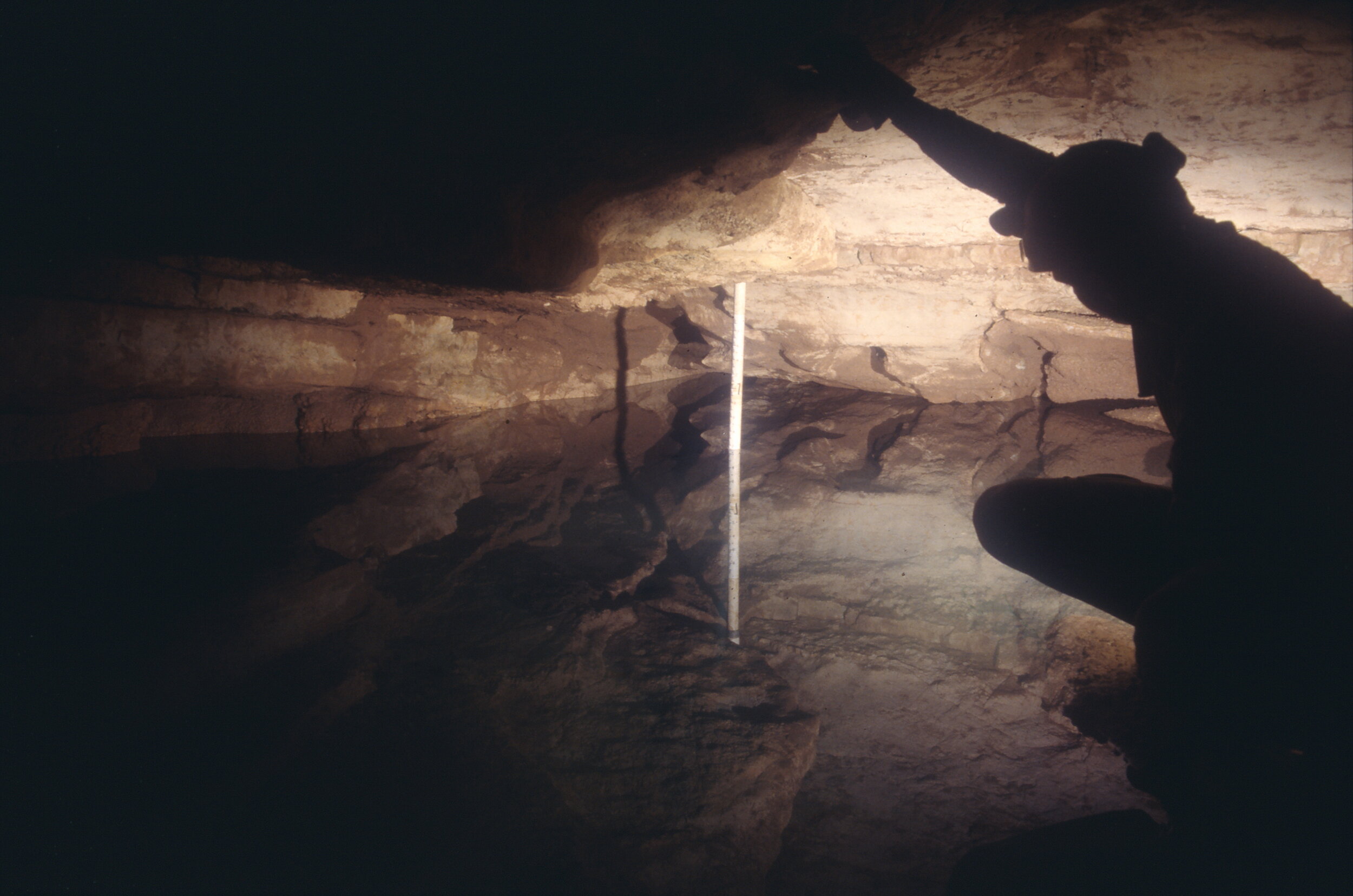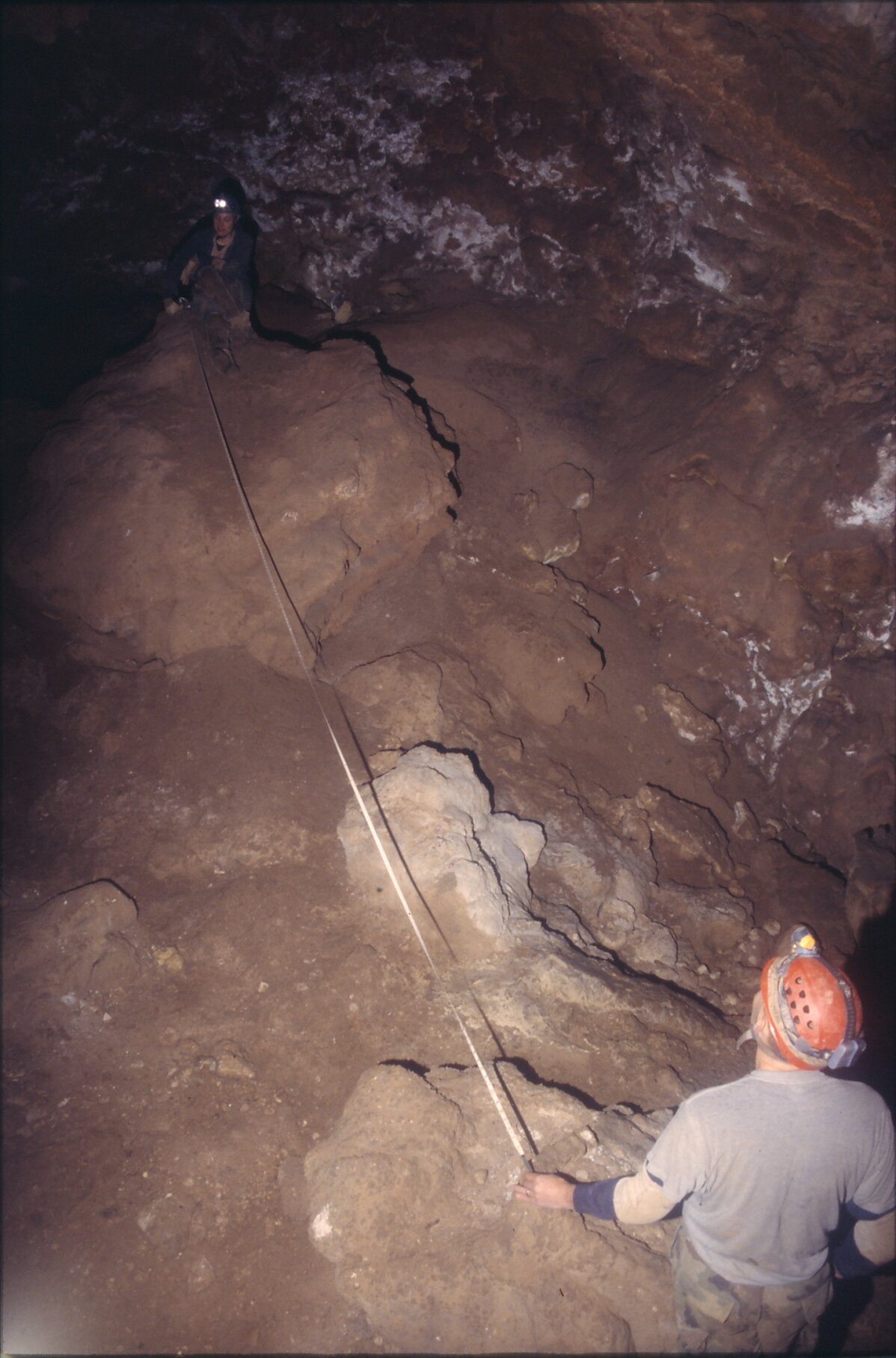Brooks Cave
Brooks Cave was discovered by Jim Brooks and John Dyer who, over a period of weeks in 1954, blasted twice in the entrance crawl to break through into the void beyond. Jim had applied calculus to determine the volume of the cave by applying formulae to measured wind velocity, duration, and barometric changes. His calculations indicated a large void possibly worth blasting through to. Briefly called Crystal Lake Cave and Twin lakes Cave for its water-table pools of exceptional clarity, it was explored by spelunkers from Rapid City, Ellsworth Air Force Base, and the School of Mines in the late 1950’s and early 1960’s. Its proximity to Rapid City subsequently resulted in serious over visitation, evidenced by the accumulation of ropes, batteries, food and beverage containers, and much other trash, as well as annoyingly spray paint. On at least two occasions, PSG members have been called on to rescue youths lost or trapped in the cave, and both times the rescue was accomplished without incident and in record time.
This cave was the subject of a bachelor’s thesis by Ralph Hanson and Larry McGraw in 1956 and a PSG mapping project in 1976. In 1971, Bruce Zerr followed the winds in the cave using an ingenious method with hydrogen balloons. His pursuits led him to three small holes in an alcove of Compass Room Hall. In 1976 and 1978, scuba diving equipment was hauled to the lakes and the depths were pushed, hoping that the lakes were sumps with airspace beyond. No such luck, in fact, visibility grew poor rapidly as silt was stirred up from the bottom. No end to passage was found, however, and a more concerted dive effort could make some amazing discoveries.
By 1984, trespassing had gotten so out of hand that the landowner was considering sealing the cave. A gate was designed and installed by Dave Springhetti with help from other Grotto members. Though still broken into persistent gate crashers for a time after its installation, no damage has been done in recent years. In the late 1980’s, the USGS installed a water level and temperature monitoring device at the lake as part of a hills-wide hydrological study. The water levels have been found to fluctuate in direct relation to releases from Pactola Reservoir. Conservation efforts by the Paha Sapa Grotto have removed much of the garbage on the Lakes route. Also, a graffiti busting trip using 600 gallons of water pumped by a fire truck has improved the cave’s appearance tremendously. Currently, trips are restricted to protect the USGS equipment which is still in place.
